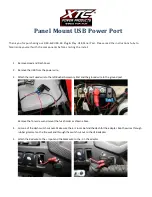
309
Continued
Main
tenan
ce
Checking and Maintaining Tyres
Checking Tyres
To safely operate your vehicle, your tyres must be of the proper type and size, in
good condition with adequate tread, and properly inflated.
■
Inflation guidelines
Properly inflated tyres provide the best combination of handling, tread life, and
comfort. Refer to the driver’s doorjamb label for the specified pressure.
Underinflated tyres wear unevenly, adversely affect handling and fuel economy, and
are more likely to fail from overheating.
Overinflated tyres make your vehicle ride harshly, are more prone to road hazards,
and wear unevenly.
Every day before you drive, look at each of the tyres. If one looks lower than the
others, check the pressure with a tyre gauge.
At least once a month or before long trips, use a gauge to measure the pressure in
all tyres, including the spare. Even tyres in good condition can lose 10-20 kPa (0.1-
0.2 bar, 1-2 psi) per month.
1
Measure the air pressure when tyres are cold. This
means the vehicle has been parked for at least three
hours, or driven less than 1.6 km. If necessary, add or
release air until the specified pressure is reached.
If checked when hot, tyre pressure can be as much as
30–40 kPa (0.3-0.4 bar, 4-6 psi) higher than if
checked when cold.
Have a dealer check the tyres if you feel a consistent
vibration while driving. New tyres and any that have
been removed and reinstalled should be properly
balanced.
Whenever tyre pressure is adjusted, you must
calibrate the deflation warning system.
2
3
WARNING
Using tyres that are excessively worn or
improperly inflated can cause a crash in
which you can be seriously hurt or killed.
Follow all instructions in this owner’s
manual regarding tyre inflation and
maintenance.
Models with deflation warning system
* Not available on all models
21 CITY 4D PET (ID KN)-42T00R031.book 309 ページ 2021年1月7日 木曜日 午後4時13分
















































